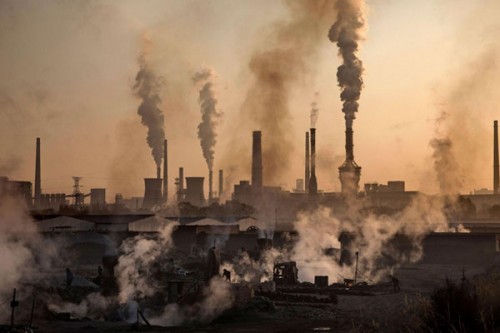Human emissions spike toxic mercury levels in atmosphere 7-fold: Study

New York, Nov 3 (IANS) Humans have increased the concentration of potentially toxic mercury in the atmosphere seven-fold since the beginning of the modern era around 1500 CE, according to new research.
The researchers from Harvard University in the US estimated that before humans started pumping mercury into the atmosphere, it contained on average about 580 megagrams of mercury.
However, all available atmospheric measurements now estimate that the atmospheric mercury reservoir is about 4,000 Mg -- nearly seven times larger than the natural condition.
Human emissions of mercury from coal-fired power plants, waste-incineration, industry and mining make up the difference.
"Methylmercury is a potent neurotoxicant that bioaccumulates in fish and other organisms -- including us," said Elsie M. Sunderland, Professor of Environmental Chemistry, at Harvard’s School of Engineering and Applied Sciences (SEAS).
"Understanding the natural mercury cycle driven by volcanic emissions sets a baseline goal for policies aimed at reducing mercury emissions and allows us to understand the full impact of human activities on the environment," Sunderland said.
The research is published in Geophysical Research Letters.
The challenge with measuring mercury in the atmosphere is that there's not very much of it, despite its outsized impact on human health.
In a cubic metre of air, there may be only a nanogram of mercury, making it virtually impossible to detect via satellite. Instead, the researchers needed to use another chemical emitted in tandem with mercury as a proxy. In this case, the team used sulphur dioxide, a major component of volcanic emissions.
"The nice thing about sulphur dioxide is that it's really easy to see using satellites," said Benjamin Geyman, doctoral student at SEAS.
"Using sulphur dioxide as a proxy for mercury allows us to understand where and when volcanic mercury emissions are occurring."
Using a compilation of mercury to sulphur dioxide ratios measured in volcanic gas plumes, the researchers reverse engineered how much mercury could be attributed to volcanic eruptions.
Then, using the GEOS-Chem atmospheric model, they modelled how mercury from volcanic eruptions moved across the globe.
The team found that while mercury mixes into the atmosphere and can travel long distances from its injection site, volcanic emissions are directly responsible for only a few percent of ground level concentrations in most areas on the planet.
However, there are areas -- such as in South America, the Mediterranean and the Ring of Fire in the Pacific -- where levels of volcanic emissions of mercury make it harder to track human emissions.

|

|

